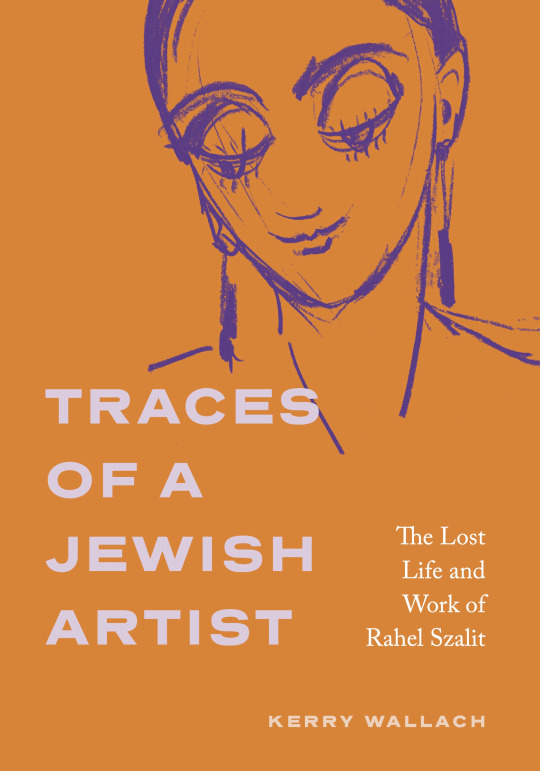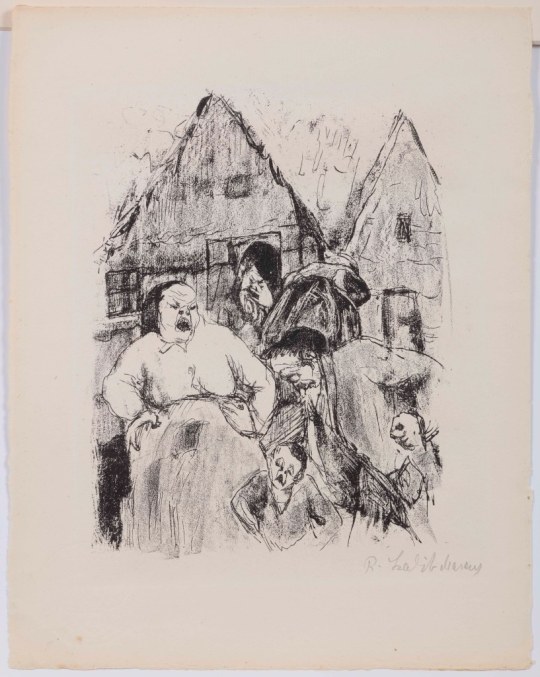#rahel szalit-marcus
Explore tagged Tumblr posts
Text
paintings round 2 poll 42


[no propaganda has been submitted]
26 notes
·
View notes
Text
Q&A with Kerry Wallach
The author of Traces of a Jewish Artist discusses Rahel Szalit, Szalit's relationship to other Jewish artists of her time, and more.

What made you want to write a book about Rahel Szalit?
I first discovered Rahel Szalit while doing research in Berlin archives. I kept finding her artwork in newspapers from the 1920s, but there wasn’t much information available about the artist herself. Her images enchanted and haunted me, and I couldn’t stop wondering about the person who created them. Like so many who were murdered in the Holocaust, Szalit’s story had never been told at length. I realized that if I didn’t tell her story, no one would.
How did Szalit differ from other women artists of her time?
Rahel Szalit (née Markus; also Szalit-Marcus; 1888–1942) came to Germany as an outsider from Eastern Europe with a working-class background. Many German women artists in the early twentieth century had middle-class backgrounds and were supported financially by their families or husbands. Szalit couldn’t afford enrollment fees for art academies, though she eventually learned painting and lithography. Yet no matter how successful she became, Szalit’s situation always remained precarious. She made ends meet by giving lessons in drawing, painting, and fencing. Probably the biggest difference between Szalit and most of her female contemporaries is that Szalit was relatively successful in Jewish circles, perhaps even more so than in mainstream artists’ circles. Szalit is known for lithographic prints, and it makes sense to compare her with Käthe Kollwitz, who likewise depicted impoverished members of the working class. Around 1927, Szalit became active in the Association of Women Artists in Berlin. Through this group, she exhibited alongside artists including Käthe Kollwitz, Lotte Laserstein, Renée Sintenis, and Milly Steger. Many depicted women as subjects, though only a few (such as Julie Wolfthorn) were known for portraying Jewish subjects.
What did Szalit have in common with other Jewish artists?
Because of her personal connections to Eastern Europe (Lithuania, Poland), Szalit’s work conveyed a sense of authenticity that was in demand. She contributed to the Jewish Renaissance in Germany alongside Jakob Steinhardt and Ludwig Meidner, who—like Szalit—depicted Jewish subjects in an Expressionist style that emphasized distorted, angular shapes and powerful colors. In fact, Szalit was one of only a handful of women mentioned in studies of Jewish art of this period.
What was Szalit's relationship to modern art movements?
Both Expressionism and New Objectivity were important for Szalit’s career in Germany. Whereas many of Szalit’s lithographic illustrations from the early 1920s experiment with an Expressionist style, many of her later paintings and drawings offered realistic portraits of social types more in line with New Objectivity. Additionally, we know Szalit was friends with painter Karl Hofer and other artists in his networks. In 1933, Szalit fled Germany for France, where she became affiliated with the School of Paris. Here she exhibited with Marc Chagall, Eugen Spiro, Emmanuel Mané-Katz, Chana Orloff, and other Jewish artists, including many who hailed from Eastern Europe. Szalit was later included in Hersh Fenster’s Yiddish memorial volume, which commemorated over eighty Jewish artists of France who died in the Holocaust. In the epilogue to my book, I discuss how Szalit—whose life and work spanned several countries and movements—could be claimed and remembered.
Traces of a Jewish Artist: The Lost Life and Work of Rahel Szalit is now available from Penn State University Press. Find more information and order the book here: https://www.psupress.org/books/titles/978-0-271-09559-2.html. Save 30% with discount code NR24.
#Rahel Szalit#Szalit#Art#Art History#Jewish Art#Judaism#Gender Studies#LGBTQ#LGBTQ Studies#PSU Press#Penn State University Press
2 notes
·
View notes
Text

Rahel Szalit-Marcus, "The Street Sneezes," from "Motl, Peysi the Cantor’s Son," 1922.
(Lithograph; 13 x 11-1/2 in.[33 x 29.2 cm.])
Before 1924, Szalit-Marcus completed illustrations to works by Sholem Aleichem, Martin Buber, Charles Dickens, Fyodor Dostoyevsky, Heinrich Heine, Mendele Moykher Sforim, and Israel Zangwill.
0 notes
Text
paintings* round 1 poll 87


My wife Dana by Marek Grechuta, 1970s:
propaganda: I know it's not the best artwork of his, amongst paintings or otherwise, but I just thought that his dedication and adoration for his wife is so adorable:) Dana is such a treasure honestly, she took care of her husband while he was suffering from bipolar disorder and side effects from medication, and even though Marek died many years ago, she still keeps memory of him and shares it with the world to this day. Ah, and how many truly amazing songs were written by Grechuta which were dedicated to his wife to whom he remained faithful 'til the end of his life<3
about the artist: IMPORTANT ARE THE DAYS WHICH WE DON'T KNOW YET but seriously, who DOESN'T know who Marek Grechuta is :D He's one of the coolest Polish musicians and songwriters of the PRL era, but, as this painting shows, a man of many talents, too He actually was heavily influenced by Witkacy and Wyspiański when it comes to visual art, which is not surprising giving the fact he dedicated two songs to the art of the latter and the whole album, Szalona lokomotywa, to the poetry of the former. Either way, I'll be glad to reopen Marek to some people by submitting this piece (and some others hehe)
Self-portrait by Rahel Szalit-Marcus, 1926:
[no propaganda has been submitted]
40 notes
·
View notes